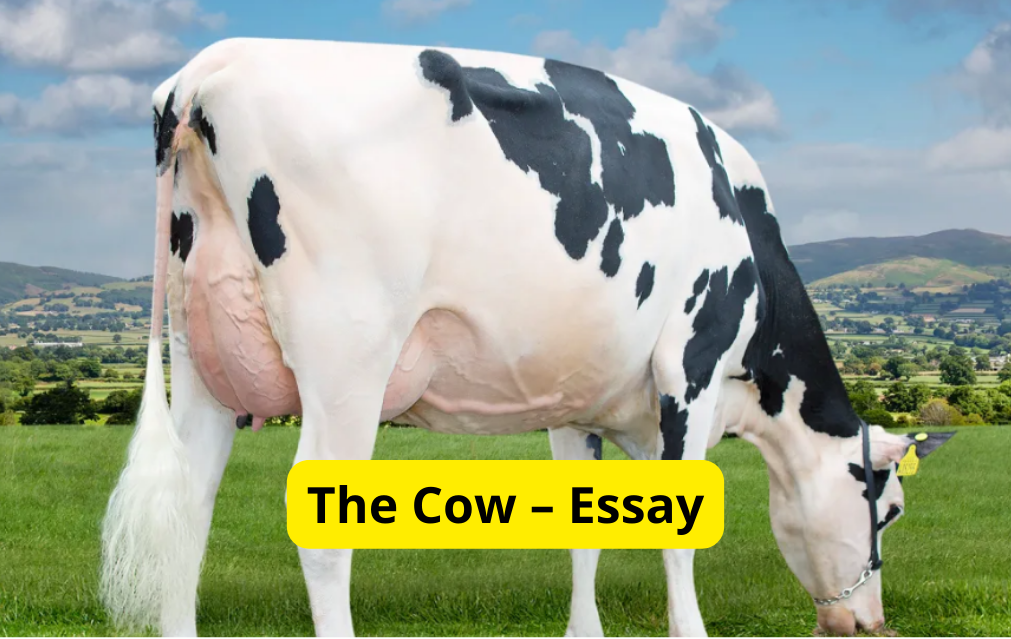Ecological Balance Essay
Ecological Balance: The Key to a Sustainable Future
Ecological balance is the state of harmony and equilibrium within an ecosystem, where all living organisms and environmental components interact in a way that sustains life and supports biodiversity. This concept encompasses a wide range of processes, including nutrient cycling, energy flow, predator-prey relationships, and symbiotic associations, all of which contribute to the stability and resilience of ecosystems. Understanding and maintaining ecological balance is critical for ensuring the long-term health of our planet and the survival of its inhabitants.
At the heart of ecological balance is the idea that every organism plays a unique role within its ecosystem. Plants and algae, for example, act as primary producers, converting sunlight into energy through photosynthesis. Herbivores, carnivores, and omnivores form various levels of consumers, relying on plants and other animals for sustenance. Decomposers, such as bacteria and fungi, break down organic matter, returning nutrients to the soil for use by plants. This cycle of energy and nutrients forms the basis of a balanced ecosystem, allowing life to thrive in a dynamic yet stable environment.
However, ecological balance can be disrupted by various factors, both natural and anthropogenic. Natural disturbances like wildfires, hurricanes, and volcanic eruptions can temporarily upset ecosystems, but these systems often recover over time due to their inherent resilience. In contrast, human-induced disruptions tend to have more severe and lasting effects. Deforestation, habitat destruction, pollution, overfishing, and climate change are among the most significant threats to ecological balance. These activities can lead to biodiversity loss, habitat fragmentation, altered weather patterns, and decreased ecosystem services, impacting both wildlife and human communities.
One of the most notable examples of ecological imbalance is the decline in biodiversity. When species become extinct or are driven to the brink of extinction, the intricate web of ecological relationships is disrupted. This can lead to a cascade of negative effects, such as the collapse of food chains, loss of pollinators, and reduced resilience to environmental changes. Invasive species, introduced to ecosystems where they have no natural predators, can also upset the balance by outcompeting native species and altering habitat dynamics.
Restoring and maintaining ecological balance requires a comprehensive approach that involves conservation, sustainable practices, and environmental protection. Conservation efforts, such as establishing protected areas, preserving endangered species, and restoring degraded habitats, are essential for maintaining biodiversity and promoting ecosystem health. Sustainable practices, including sustainable agriculture, forestry, and fishing, help ensure that resource use does not exceed the ecosystem’s capacity to regenerate. Environmental protection policies, like pollution control and climate action, play a crucial role in preventing further damage and promoting ecological resilience.
Education and public awareness are vital components of any effort to maintain ecological balance. By increasing awareness of the importance of biodiversity and the interconnectedness of all life forms, individuals and communities can contribute to the collective effort to protect our planet’s ecosystems. This can lead to more responsible consumption, reduced waste, and greater support for conservation and sustainability initiatives.
In conclusion, ecological balance is a foundational concept for a sustainable future. It encompasses the delicate equilibrium within ecosystems, allowing life to flourish while providing essential services for human societies. The disruptions caused by human activities pose significant risks to this balance, but through concerted efforts in conservation, sustainable practices, environmental protection, and education, we can work towards restoring and maintaining the harmony of our planet’s ecosystems. By doing so, we not only ensure the well-being of the natural world but also safeguard the resources and environment that are essential for our own survival.
Ecological Balance Essay exm:02
Title: Striking the Balance: Understanding and Preserving Ecological Harmony
Introduction:
Ecological balance is the cornerstone of a healthy and thriving planet. It encompasses the intricate relationships between living organisms and their environment, ensuring the sustainability of ecosystems and the well-being of all life forms. However, human activities have increasingly disrupted this delicate balance, leading to widespread environmental degradation and biodiversity loss. To safeguard our planet’s future, it is imperative to understand the significance of ecological balance and take concerted action to preserve it.
Importance of Ecological Balance:
– Ecological balance sustains biodiversity by maintaining the interdependence of species within ecosystems.
– It ensures the provision of ecosystem services vital for human survival, such as clean air and water, fertile soil, and climate regulation.
– Balanced ecosystems exhibit resilience to environmental changes, enhancing their ability to adapt and recover from disturbances.
Factors Disrupting Ecological Balance:
– Deforestation and habitat destruction diminish biodiversity and disrupt ecological processes.
– Pollution of air, water, and soil contaminates ecosystems, harming both wildlife and human populations.
– Overexploitation of natural resources, such as overfishing and unsustainable agriculture, depletes ecosystems beyond their capacity to regenerate.
– Introduction of invasive species alters native ecosystems, leading to biodiversity loss and ecological imbalances.
Consequences of Ecological Imbalance:
– Loss of biodiversity weakens ecosystems, reducing their ability to provide essential services and increasing vulnerability to ecological disasters.
– Climate change, driven by human-induced greenhouse gas emissions, exacerbates ecological imbalances, triggering extreme weather events and habitat degradation.
– Societal impacts include food and water shortages, displacement of communities due to environmental disasters, and heightened health risks.
Preserving Ecological Balance:
– Conservation efforts, including habitat restoration, protected area management, and species conservation programs, are vital for maintaining biodiversity and ecosystem resilience.
– Sustainable resource management practices, such as sustainable forestry, fisheries management, and organic agriculture, promote long-term ecological sustainability.
– Environmental policies and regulations aimed at reducing pollution, curbing deforestation, and mitigating climate change are essential for safeguarding ecological balance.
– Public awareness campaigns and education initiatives foster a deeper understanding of ecological principles and inspire collective action towards environmental stewardship.
Conclusion:
In conclusion, ecological balance is fundamental to the health and sustainability of our planet. By recognizing the interconnectedness of all life forms and ecosystems, and by adopting measures to mitigate human impacts on the environment, we can work towards restoring and preserving ecological harmony. Through collective efforts at local, national, and global levels, we can ensure a brighter and more sustainable future for generations to come.
Ecological Balance: The Key to a Sustainable Planet
Ecological balance is the dynamic state of equilibrium within ecosystems, where living organisms and non-living components coexist in a harmonious and sustainable manner. This balance is fundamental to the health and survival of all forms of life on Earth, including humans. At its core, ecological balance represents the interconnectedness of species and their environments, driven by natural processes such as nutrient cycling, energy flow, and biodiversity. Disruption of this balance can lead to profound consequences, threatening not only ecosystems but also the essential services they provide to humanity.
The Components of Ecological Balance
In a balanced ecosystem, every species has a role to play. Producers, such as plants and algae, form the base of the food chain by converting sunlight into energy through photosynthesis. Consumers, including herbivores, carnivores, and omnivores, derive their energy from eating other organisms. Decomposers like bacteria and fungi break down dead organic matter, returning nutrients to the soil, which then nourish producers. This cycle creates a stable environment where energy and nutrients flow through various trophic levels, allowing ecosystems to sustain life.
Biodiversity is a critical element in maintaining ecological balance. A diverse ecosystem with a wide range of species tends to be more resilient, with each species playing a unique role that contributes to the overall health and stability of the ecosystem. This diversity helps ecosystems adapt to changes and disturbances, thereby ensuring their continued survival.
Disruptions to Ecological Balance
Human activities have become a significant source of disruption to ecological balance. Deforestation, pollution, habitat destruction, overfishing, and the introduction of invasive species are among the leading causes of ecological imbalance. These actions can result in the loss of biodiversity, soil degradation, disrupted food chains, and climate change, all of which undermine the stability of ecosystems.
The loss of keystone species, which have a disproportionately large impact on their ecosystems, can trigger cascading effects that destabilize entire ecosystems. For example, the decline of large predators can lead to overpopulation of herbivores, resulting in overgrazing and loss of vegetation, which in turn affects other species and soil health.
Restoring and Maintaining Ecological Balance
Restoring ecological balance requires a multi-faceted approach that addresses the root causes of disruption. Conservation efforts, such as protecting endangered species and preserving natural habitats, are essential to prevent further biodiversity loss. Sustainable resource management, including sustainable agriculture, forestry, and fishing practices, helps ensure that natural resources are used responsibly and in a manner that allows ecosystems to recover and thrive.
Environmental protection policies, such as regulations on pollution and deforestation, are crucial in preventing further damage to ecosystems. These policies, when effectively implemented and enforced, can significantly reduce the impact of human activities on the environment.
Public awareness and education also play a pivotal role in maintaining ecological balance. By raising awareness about the importance of ecosystems and the consequences of ecological imbalance, individuals and communities can be motivated to take action, whether through personal choices, advocacy, or support for conservation efforts.
Conclusion
Ecological balance is vital for the health and sustainability of our planet. When ecosystems are in balance, they provide essential services that support life, from clean air and water to food and climate regulation. However, the disruption of this balance poses a significant threat to both natural ecosystems and human societies. Restoring and maintaining ecological balance requires a concerted effort from governments, organizations, and individuals. By embracing sustainable practices, promoting conservation, and raising awareness about the importance of ecological balance, we can work toward a future where both nature and humanity can coexist in harmony.

